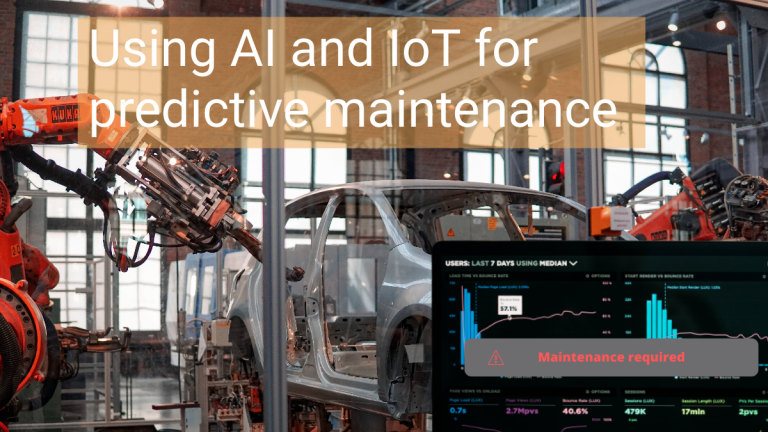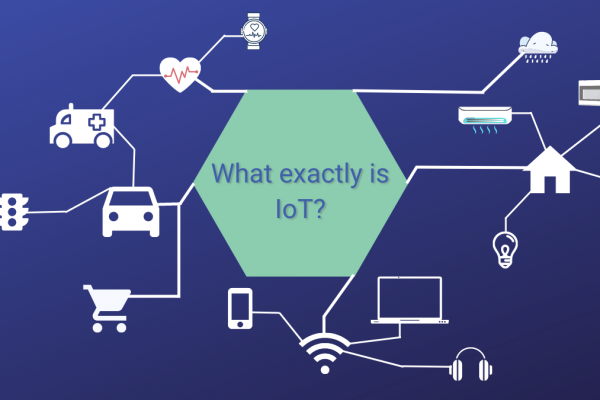If you simply do a Google search on top applications of IoT or top applications of AI, predictive maintenance is a term that comes up quite often. While not as fun as an electric scooter or autonomous drones, as far as industrial internet of things goes, predictive maintenance is one of the widely embraced application of IoT or AI. Let’s have a look at maintenance as a whole before understanding what predictive maintenance is.
Maintenance
Everyone knows what it is. They are activities performed to ensure that a machine or equipment is functioning properly producing the desired output with any failure. When a piece of equipment fails, it’s not just an economic loss. Depending on the function of the equipment, there may be safety aspects as well. For example, an engine failure of an aircraft in flight causes a serious threat to the safety of the passengers and the crew.
So deciding when to carry out maintenance requires considering many different factors. Factors may be time for maintenance, whether regular operations will be affected and if so to what degree, the cost for maintenance, safety issues, etc. The whole process is a huge risk management exercise.
Generally speaking, there are three types of maintenance
Breakdown maintenance
This is probably the most familiar form of maintenance. Maintenance is performed only when the equipment fails in this situation. Simply put, work it till you break it. It may not look like, but this is ideal in certain situations. With breakdown maintenance, you’re not spending any resources than you need. You’re not spending any money on replacing parts on a piece of equipment unless it is absolutely necessary, and you’re not taking machinery offline possibly affecting production.
But for going this route, you need to consider two aspects. Safety, and downtime. If a rope is holding a worker from falling 100ft to the ground, you can’t wait for it to snap to replace it. You can’t wait for an aeroplane engine to blow up to replace it. In these cases, you have to conduct periodic inspections and maintenance to make sure everything is working properly.
The other aspect is the downtime. Failure of critical equipment may halt the production line. The resources spent on periodic maintenance and the downtime for breakdown maintenance is compared in such situations. If a belt breaks and it doesn’t affect the safety, and it can be repaired in no time, breakdown maintenance may be a good option.
Periodic maintenance
This is maintenance conducted at a given frequency no matter the condition. The frequency can be a period of time, it could be hours operated, it could be kilometres driven or other units. An aircraft engine is checked every 400-600 flight hours. The engine oil in a vehicle is replaced every 1000 km or so.
Periodic maintenance is a risk estimate. It is an assumption that, based on history, a piece of given equipment is bound to fail after certain operating hours, plus a margin of error. It reduces costly downtime as well as additional costs due to complete equipment failure and makes the operation of the equipment much safer.
But periodic maintenance has its own drawbacks. Not all pieces of a given type of equipment need maintenance at a certain interval. A machine operated well within its margins is likely to need maintenance less often than something operated much closer to the margins. This creates a situation of unnecessary maintenance.
And this can be significantly huge. For example, the overhaul of a single Rolls Royce Trent 900 engines on an Airbus A380 conducted every 25000 flight hours cost $7.5 million.
So what if you could predict when to conduct maintenance?
Predictive maintenance: best of both worlds
Predictive maintenance is figuring out exactly when a machine needs maintenance. A lot of work goes into figuring out preventive maintenance schedule. But that’s for the general piece of equipment. In predictive maintenance, maintenance for every equipment is predicted.
Even without AI or IoT, predictive maintenance was still possible, either by carrying out ultrasonic inspections or checking the quality of the product or by assessing the vibration levels of equipment. And as you can imagine, it saves a lot on unnecessary maintenance and downtime.
But AI and IoT take predictive maintenance to a whole other level.
Unlike before, an operator doesn’t need to take manual measurements every now and then. A whole new set of data points are monitored and analysed in real-time with AI and IoT.
Different factors that affect the health of equipment are monitored using sensors. For example, it could be the temperature of the system, the level of noise, vibration, etc. By comparing them to the values of a healthy equipment, you can predict when a machine may need maintenance. And you can automate it.
The data from these sensors are filtered through an IoT gateway and sent to the cloud where machine learning algorithms carry out their role. These algorithms are perfect for finding patterns and predicting outcomes from big data.
IoT based predictive maintenance in different industries.
While predictive maintenance can significantly cut down expenses in many industries, the industries that gain by maintaining safety standards while reducing downtime stands to gain the most.
Oil and gas industry
Safety plays a huge role in the oil and gas industry. Failures in equipment can cause injury or even death of the operators and plant workers and result in environmental damages that can take years to mitigate. And therefore a significant amount of resources go into ensuring the safety of these systems.
The safety of oil and gas plants can be improved, automated, and made resource-efficient with IoT.
Airline industry.
The airline industry is one of the most expensive industries in some way and airlines rely on some serious data crunching to generate a profit. Everything from passenger turnout to weather delays is predicted using this. An aircraft sitting idle is not only not generating revenue, but it is also eating into the profits. And an aircraft has many different aspects, multiple redundant systems, moving parts, etc to ensure the safety of its passengers.
And simply by reducing unnecessary maintenance, the airlines can significantly reduce their operating costs. When it comes to using sensors and automation, the airline industry has been at the forefront. Sensor and computer-controlled passenger aircraft have been assisting pilots way before autonomous driving was in the picture. And current aircraft have sensor systems that send out alerts in case of a failure.
AI and IoT can take this forward and make aircrafts safer and cheaper to operate.
Manufacturing Industry
The manufacturing industry relies on a large number of machines daily. Careful maintenance is carried out on every one of them to ensure proper functioning. But research has suggested that most equipment failures occur randomly. Meaning, even with preventive maintenance, machines may simply fail. And this can create significant downtime.
This can be avoided with predictive maintenance. Samples may be collected offline, or equipment may need to be taken apart to inspect in the case of traditional predictive maintenance. The whole process can be made more efficient with real-time monitoring using the Internet of Things.




